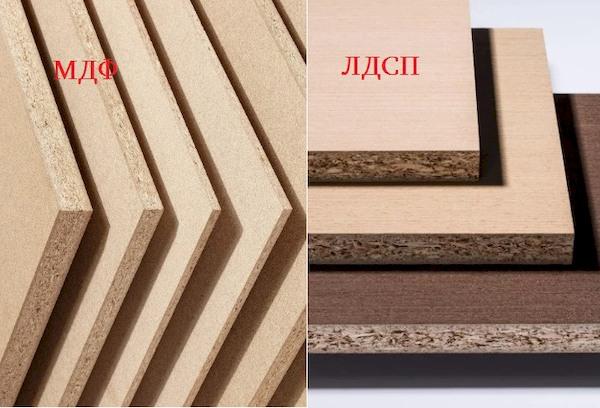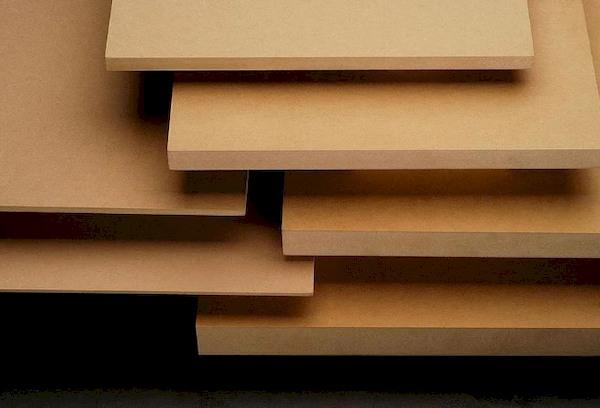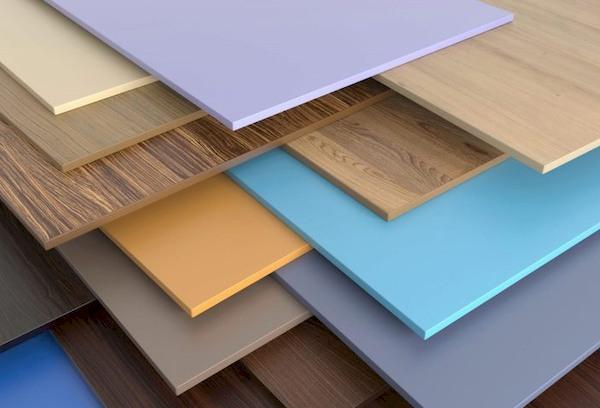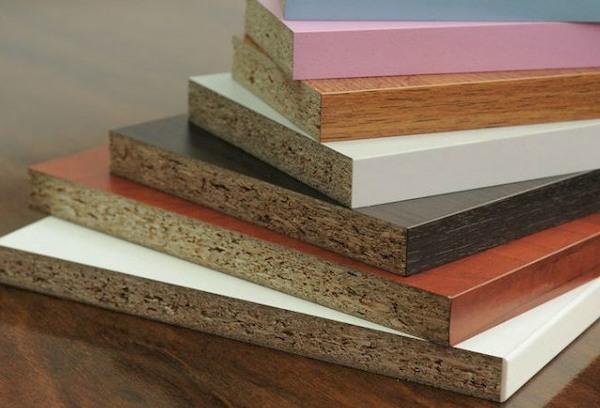What is the difference between MDF and laminated chipboard in furniture - differences in the photo, comparison of characteristics
MDF and laminated chipboard are what furniture is made from these days. When choosing a wardrobe, bed, table and kitchen corner, you need to understand what the abbreviations mean and how MDF differs from laminated chipboard. The first material is of good quality, its density is not inferior to wood, it is heavy, pressed and glued together from finely divided raw materials. In laminated chipboard, wood chips are hidden under the laminated shell - a raw material with a larger fraction. You need to be able to drill it without chipping. Laminated chipboard requires more careful handling during assembly.
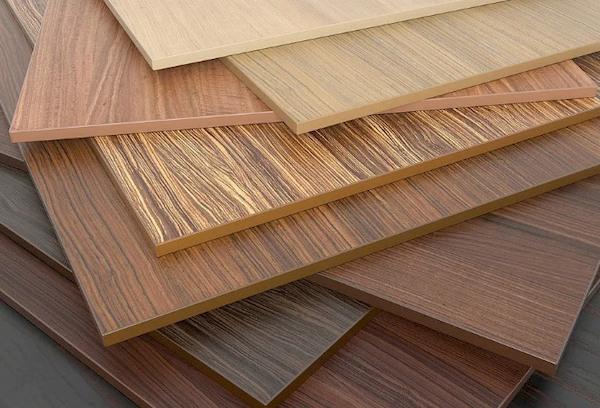
How to distinguish MDF from chipboard?
The easiest way to distinguish MDF from laminated chipboard is by comparing two probes or open-cut boards of the same size and thickness. It is more difficult to find differences in finished cabinet furniture.
We offer a simple test:
- Weigh materials. MDF is noticeably heavier.
- Examine the cut. In laminated chipboard, individual wood particles are distinguishable. They are quite large. The MDF cut is as uniform as possible, consisting of the finest fibers glued together.
- Try to destroy the material at the cut. In the case of laminated chipboard, the inside will crumble and break off. MDF is unlikely to be damaged.
- Furniture made from MDF is much more expensive. The difference in price can be 2-3 times or more.
- Pay attention to the shape and decor of the furniture facade. Rounded lines and carvings indicate that the item is made of MDF. Laminated chipboard is rarely bent, and it is completely impossible to carve it.
Attention to the photo:
You can study the difference in characteristics, pros and cons of materials in the table:
| MDF | laminated chipboard | |
| Density | from 600 to 1250 kg/m³ | up to 550 kg/m³,
550–750 kg/m³; over 750 kg/m³ |
| The basis | wood fibers
|
chopped wood chips and wood waste |
| Binding component | paraffin, tree resin, urea resin, formaldehyde resin | formaldehyde resin |
| Assortment of colors and textures | ++ | +++ |
| Safety | +++ | ++ |
| Moisture resistance | above average | above average;
low for open cuts and chips |
| Fastener retention | +++ | + |
| pros | wear-resistant;
it is possible to mill curved holes and cavities of different depths; possibility of manufacturing curved facades; strong retention of fasteners and accessories |
easy to install;
cheap
|
| Minuses | Expensive;
heavy |
if the lamination is damaged, poor water resistance;
it is almost impossible to re-screw fasteners without damaging the material |
What is MDF?
MDF is an abbreviation for the English name of the material “Medium Density Fiberboard”, which means “medium density fiberboard”. The first prototype of the stove was randomly received by W. G. Mason, an inventor who lived in the USA. He tried to make cardboard from a mountain of sawdust and wood chips: he filled a special device with wood chips, water and heated it. Inside, due to pressure, the raw material was divided into tiny fibers. Mason was never able to create paper, and he continued to work on making wood-based panels.
For a long time, MDF boards were not in demand. The material began to be produced on an industrial scale in 1966 in the USA, and in Russia much later - in 1997.
It has found wide application. The structure of the slab made it possible to carry out carvings and create spectacular facades for furniture. Thin MDF boards are often used as wall panels and are used to make gift boxes.MDF is capable of absorbing sound and is found in acoustic systems.
Today, the material is obtained by the “dry” method without the use of water. Main stages:
- Formation of raw materials.
- Isolation of wood fibers.
- Pressing.
- Sawing slabs.
- Grinding.
- Coating with special compounds and facing materials: paint, PVC film, veneer, etc.
In high-quality MDF, the binding component is wood resin, which is formed when heated. Such boards are 100% safe and as environmentally friendly as natural wood.
Laminated chipboard - what is it?
LDSP is laminated chipboard (chipboard). Chipboard was invented by the German M. Himmelherber in the 1930s, and in the 1950s he patented his invention. In 1978, perfectly smooth slabs provided worthy competition to solid wood, which could not boast of uniformity and often had defects due to knots and cracks. The slabs won over for their low cost and were mainly used in construction. But at the same time, numerous disadvantages of the material were noted: fragility, deterioration due to exposure to moisture, etc.
With the development of technology, chipboard began to be made from chipboard - a laminated version. The material has become one of the most popular in the manufacture of cabinet furniture.
How to get it:
- Production of raw materials. Wood cleared of bark is ground into chips, or waste obtained from wood processing is used.
- Drying chips in chambers. Carried out to evaporate moisture.
- Sorting. Using special equipment, small chips are sifted out, and large chips are crushed again.
- Gluing. The raw materials are mixed with formaldehyde resin.
- Pressing. First, the material is put under a cold press, then under a hot one to give greater strength.
- Formation. The slabs are cut, leveled and polished.
- Facing. The material is covered with a film based on thermosetting polymers (paper-resin) or a resistant melamine film.
Lamination made it possible to solve three problems of chipboard at once - to protect the board from moisture, to prevent toxic fumes from escaping, and to give the material an aesthetic appearance. Thanks to the laminated chipboard cladding, it can be of any color, imitating natural wood. To prevent moisture from penetrating through the cuts, install a 0.4 or 2 mm PVC edge.
Question answer
Does laminated chipboard emit formaldehyde?
Modern materials are completely safe. In 1986, an international scale was approved for determining the emission class of wood-based panels. It regulates the amount of free formaldehyde. E 0.5 is considered formaldehyde-free chipboard (recommended for children's furniture). E 1 is allowed for use in residential buildings, and E 2 is prohibited for furniture in most European countries.
What's best for furniture?
Furniture made from laminated chipboard is much cheaper, has a large selection of colors and fully satisfies standard requirements for furniture. But when it comes to quality, strength and durability, MDF wins by a wide margin. The material is used to make high-quality furniture that can be milled, hung heavy elements, and created complex structures. When choosing between laminated chipboard and MDF, you should pay attention to the reputation of the manufacturer, the technologies it uses, as well as the characteristics of specific boards, which come in different thicknesses, with enhanced strength, moisture resistance, formaldehyde-free, etc.
Both materials have been successfully used in furniture for several decades. Production technologies are constantly being improved.Today, both MDF and laminated chipboard can be water- and fire-resistant, with increased strength. But at the same time, there remains a difference in the ability to bend the material and make threads, in the density and strength of the fastener. MDF facades, as a rule, look more expensive and cost accordingly.
